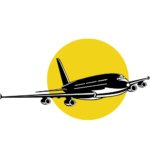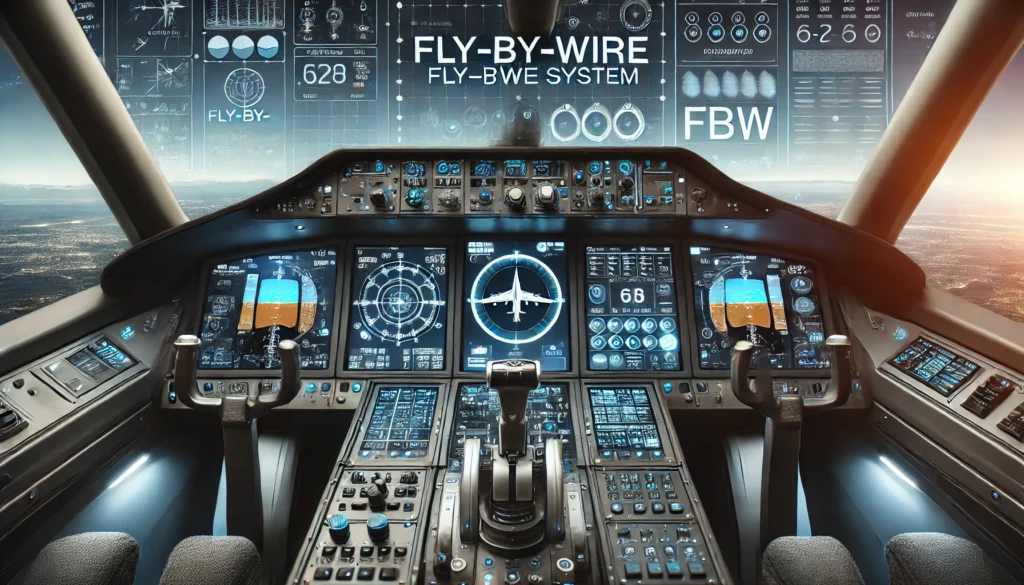Aircraft and Aviation have always been about pushing the limits, even if it’s about the Wright brothers’ first flight or from transforming the plane’s bulky and complicated controls to electronic signals known as the Fly By Wire system.
Have you Ever Heard about the Fly By Wire System? Or do you know how it works? Let’s see how it works today.
The Fly by Wire system is a flight control system; as the name implies, it helps control flights. In the past, Pilots used to control the flight mechanically, meaning they controlled all the flight control surfaces manually, Such as Flaps, Rudders, and Elevators. Some old aircraft, Such as the Cessna 152, still have those types of control systems.
BUT BUT BUT… Hang On… What’s New?
Now everything is computerized. The Pilot doesn’t control the flight control surface directly; instead, the pilot gives the signal to the computer, and the computer calculates if the command given by the pilot is reliable and correct or if something is wrong. Something like the pilot is drinking coffee in the cockpit and accidentally hitting his hand on the stick.
If the command given by the pilot is correct, then the fly by wire system will follow it. In another case? Nothing, It just won’t do it.
How Does Fly By Wire System Work?
The principle used for the Fly By Wire System is the Error Control System.
When a command it sent by the pilot or co-pilot to change the course of the flight, The difference between current position of the control surface and desired position of the control surface has been analyzed.
For example, the Pilot wants to Tilt the plane to the left by 2 Degrees, which is now flying at level or 0 Degrees, and Gives a command to lower the correct frame by Two degrees.
Fly By Wire system will read the command to lower the flap by 2 Degrees and see if it is possible according to the flight control laws. If yes, it will analyze the current position of the right flap which was zero degree in Our case, And the difference between Desired position is 2 Degree.
So it will give the electrical signal and move the flap until this difference is ZERO. This means that any error between the two becomes a command to the flight control surface until output equals input.
You tube: Captain Joe
Advantages Of Fly By Wire System?
The wire system has made the flight safer and more advanced.
- Improved Flight Safety: As discussed, it won’t let the pilot make any mistake while moving while flying. Every move is more calculated and more precise.
- Efficiency: The error control and feedback control system ensure no unnecessary movements on the flight control surface. Which means no extra drag, smoother flight, and more efficiency.
- Reduced Cockpit Workload: With the Help of Fly by the system, most of the pilot workload has been taken over by computer so the pilot can focus on more strategic decisions.
- Reduced Weight: Since everything is controlled by electrical signals, you don’t need those heavy mechanical parts anymore. It helps aircraft manufacturers reduce aircraft weight drastically.
Disadvantage’s of Fly By Wire System?
- More Reliability on Electronics: Since It is all about electric systems and Electrical signals. The whole flight depends on that. Any kind of failure can lead to huge stress, even though we have fail-safe features in place for that, too.
- High Maintenance Cost: It is self-assumed it would have cost a fortune to develop a system like this, but everything needs maintenance. Since it is a complicated maintenance, it costs more to maintain it, too, rather than that mechanical system.
- Reduced Pilot Direct Control: Everything is first calculated, and then action is being taken if it fine according to flight laws. It limits the pilot’s ability to maneuver aircraft in some scenarios where human intuition is required.
- Cyber Threats: Like our online accounts or anything on the internet, the Fly by Wire system is also at Risk of Cyber Threats or Unauthorized Access.
- Older Aircraft Upgrades: It is not very cost-effective to upgrade the old aircraft with the Fly By Wire system, Which limits to having Fly By Wire system in a new models or in future aircraft only.

